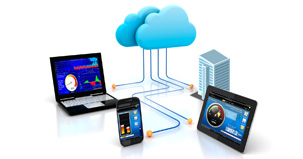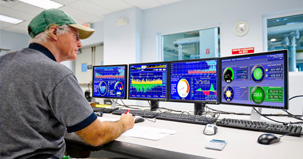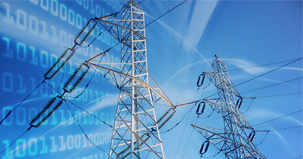- Home
- Smart Data
Smart Data
Actionable intelligence on energy and water use:
- Helps users identify inefficencies, and waste
- Provides real-time feedback on conservation
Right data for the right audience:
- Facility managers identify when and where energy is wasted
- CFO's can track and verify financial savings from initiatives
- Company knows its carbon and water footprint
Related Products
 Information any time, anywhere
Information any time, anywhere - Smart User
Smart User
Smart users leverage real-time data and reduce energy and water use by:
- Continuously identifying opportunities
- Acting on opportunities
- Tracking and verifying savings
- Sustaining savings
Related Products
 Monitor, Manage, Maintain
Monitor, Manage, Maintain - Smart Community
Smart Community
A smart community is one where all stakeholders are engaged in energy and water conservation. A smart community can be achieved by:
- Showing people precisely how much they are using
- Providing real-time feedback on conservation actions
- Effectively communicating efficiency results
Related Products
 Communicate and Conserve
Communicate and Conserve - Smart Grid
Smart Grid
Smart grid, as we define it, is a "green grid", with efficient resource use and the key to a low-carbon future. We help our customers prepare for the smart grid by:
- Engaging users with smart data
- Enabling smart users to increase resource efficiency
- Educating & empowering smart communities
Related Products
 Smart grid and a smarter future
Smart grid and a smarter future - Smart Buildings
Smart Buildings
Smart buildings maximize resource (energy, water, capital) efficiency. These buildings are optimized using energy and water management process with high data visibility which lead to reduced energy and water spending.
- Higher operating income and higher asset values for owners
- Increased productivity for occupants
- Lower carbon footprint for the community
 Resource efficient buildings
Resource efficient buildings
Recent Posts
Small Water Leaks Can Have Huge Impact on Water Bills, Conservation Efforts
The population of the United States almost doubled between 1950 and 2000. However, in that same 50-year period, public demand for water more than tripled! Americans now each use an average of 100 gallons of water each day— enough to fill 1,600 drinking glasses. And there’s one thing that is certain – wherever there’s water, there will be leaks.
Leaks can have far more of an impact than the annoying “drip, drip, drip” that keeps us awake at night. In fact, if you can hear the leak – you are better off because you can find the problem and fix it! But, especially in commercial buildings where there are multiple sources for potential water leaks, the problem can be costly. Often, you won’t know you have a leak until you open up your monthly water bill. Did you know that one leaky faucet wastes gallons of water in a short period of time? A leaky toilet can waste 200 gallons per day!
Water leaks can cause serious building structural problems. Further, even the smallest of leaks can cause enough water to be wasted to have a real adverse impact on even the best of water conservation efforts.
Studies have shown that one-third of all business downtime is a direct result of water damage situations. Business pays big bucks each year – billions – for the waste. In commercial properties like high rise condos, a single water leak often trickles down to damage another person’s property (and potentially another, and another). This frequently results in expensive lawsuits involving the different condo owners as well as the property managers and the insurance companies.
Commercial properties clearly have more plumbing throughout than home residences. When you consider the havoc a faulty fire sprinkler system could have, monitoring water usage and finding out about any potential problems becomes a critical component of facility management.
By monitoring water usage over time, it’s easy to find erratic consumption before the problem gets out of hand. Additionally, by performing an overall assessment of water use in your building, you can study the usage data and make informed decisions about water conservation that will have a major impact on utility costs.
Consider this:
Optimized monitoring of water usage will provide immediate notification of potentially damaging water leaks or pressure problems, even before they are visible.
Monitoring water consumption data can also allow the implementation of methods for cost-analysis and other efficiencies, as well as verify savings from improvement projects in water systems.
New technologies in water monitoring systems can help real estate owners manage, assess, and conserve water consumption within individual buildings, as well as across an entire building portfolio. In addition, they can allow owners the option to share building data with others inside or outside of an organization, and develop a plan going forward to ensure operating effienciencies. For more information, visit www.noveda.com.
Water monitoring efforts allow commercial property owners and managers the ability to see and understand their facilities' usage profiles, and identify critical events like water leaks in real-time. This helps to operate buildings more efficiently, and save precious water resources. With better understanding and measurement of water consumption, commercial businesses can take a lead position in the forefront of water conservation.
Be vigilant! Once you understand your company’s water use trends, monitor the results of continued measurement.These simple ideas will help you find and fix leaks as soon as possible, saving you headaches and money and allowing you to do your part to save water – one of earth’s most precious, limited natural resources.
Originally published in greenbuildingpro.com



